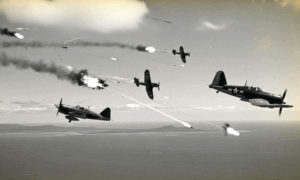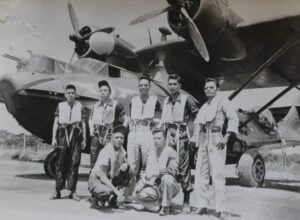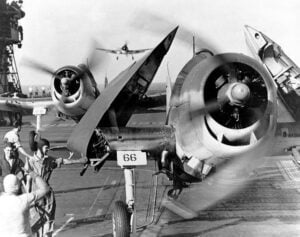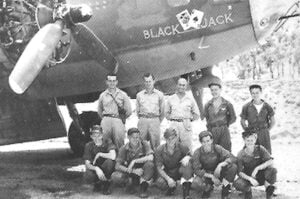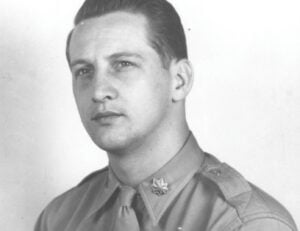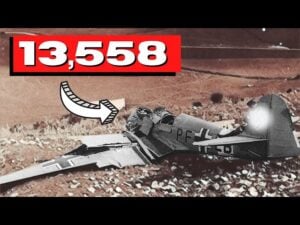How Chasing Perfection Broke Japan’s Best Fighter
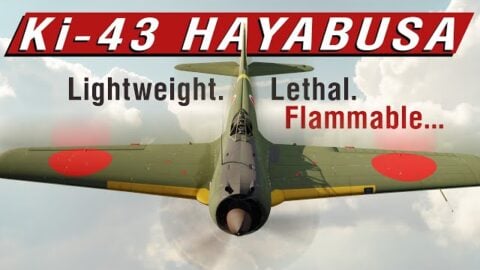
YouTube / Rex's Hangar
The aircraft produced by Imperial Japan is one of the most fascinating to have emerged from World War II, and one of them is the rather infamous Nakajima Ki-43.
Origins
The origins of this sleek and rather lightweight fighter can be traced back to the interwar years, where the Nakajima K-27 entered service in 1937. Eventually, Nakajima received a contract for its replacement on what would become the Ki-43. In theory, their task was straightforward: replace the Ki-27 and, at the same time, produce an interceptor and bomber escort capable of defending Japan’s modern bombing fleet.
The requirements were quite ambitious- a top speed of 500 km/hr. a climb rate of 1,000 meters/minute and an operational range of 800 km. Finally, the new aircraft would at least be equal to the Type 97 Fighter or the Ki-27. In engineering terms, this was a headache. The Ki-27 had been built with agility as its defining trait, trading armor and firepower for ethereal handling. Trying to match that kind of nimbleness in a faster, heavier fighter was almost impossible.
The Ki-43 Project
The design took shape throughout 1938, with the finished prototype ready to take flight in early January 1939. The initial design challenge was to achieve the impossible, matching the Ki-27’s acrobatic agility in a larger, heavier aircraft.
The design team started with a perfectly logical, if ultimately impractical, approach. If the new aircraft were to weigh 50% more than its predecessor, then surely the wing area should increase by the same proportion. However, this added only more weight, more drag, and detracted from speed. It was eventually conceded that some form of compromise should be made.
The solution was a more modest 20% increase in wing area, which was enough to enhance maneuverability without entirely sacrificing performance. As a result, later in its service life, the Ki-43 would predictably not have problems with maneuverability, easily outclassing virtually all enemy designs in a turn fight.
Durability would be another matter.
In the pursuit of tighter turning circles, armor and self-sealing fuel tanks were completely omitted. The design team had clung to a weight-to-power limit of 2.15 kg/hp. The result was a sleek, low-wing monoplane made of all-metal construction, and modern features such as a retractable undercarriage and a fully enclosed cockpit.
Service
The Ki-43 had been received warmly, but its drawbacks had been highlighted sharply. Lightweight and easy to handle, it gained legendary status for its combat performance in East Asia during the early years of the war. It could outmaneuver any adversary, but early versions lacked armor, self-sealing fuel tanks, and carried only modest armament. Only in its final variant, the Ki-43-II, produced as late as 1945, were these shortcomings addressed.
The type featured a new wing design that was not only structurally stronger, given the wing-shedding habits of the earlier variant, but was 30 cm shorter and capable of mounting bomb racks, expanding the aircraft’s tactical flexibility for the army.
Legacy
As the war drew to a close, the older Ki-43s, along with other outdated aircraft, would be repurposed for kamikaze duties. However, many would be kept back for the final defense of the home islands. With 3,190 produced by Nakajima and 2,629 produced by Tachikawa, the Ki-43 was the second most-produced Japanese fighter aircraft of WWII.
Post-war, its service life was short-lived. For all its structural shortcomings and poor firepower, the Nakajima Ki-43 proved itself to be far more than the sum of its parts. Although pilots would refer to it as fragile and underarmed, the aircraft still managed to deliver impressive combat results in the hands of experienced pilots.














